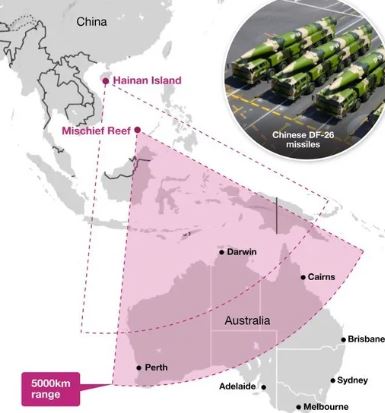Brisbane: A startling and ominous development has unfolded over Australian skies. Three B-2 Spirit stealth bombers from the United States Air Force recently made an unexpected appearance at Royal Australian Air Force Base Amberley in Queensland. This move underscores the escalating tensions between global powers, particularly the United States and China. Photo Credits: 7NEWS
The deployment of these advanced aircraft, which occurred last month, is part of a broader strategy to address deteriorating geopolitical relations. The B-2s, known for their stealth capabilities and nuclear capability, were last stationed in Australia in 2022. However, heightened tensions involving China, India, Japan, Taiwan, and the Philippines have prompted the US to intensify its military exercises in the region.
The stealth bombers conducted joint operations with the Royal Australian Air Force (RAAF), involving Australian F-35A Lightning stealth fighters, EA-18G Growler electronic warfare aircraft, and E-7A Wedgetail radar aircraft. They were also refuelled by Australian KC-30A tankers. A third B-2 flew a 5,300-kilometer journey into the Indian Ocean to refuel at the remote US-controlled island of Diego Garcia.

The US Pacific Air Forces (PACAF) described the mission as a demonstration of its bomber force's capability to enhance security and stability among its allies and partners. This exercise aims to showcase the US Air Force's ability to operate globally, reinforcing the rules-based international order and deterring potential aggression in the Indo-Pacific region.
The B-2 Spirit, which entered service in 1989, is among the most expensive and complex aircraft ever built, with an estimated cost of $2 billion each. The US Air Force operates only 19 B-2s, with around half available for service at any given time.
The recent deployment included practicing rapid deployment and turnaround procedures for the B-2s. "Hot pitting" operations allow the aircraft to refuel, change crews, and take off without shutting down their engines, a critical capability for maintaining operational tempo in high-stakes scenarios.
US military planners are expanding their operational scope in the Indo-Pacific region in response to China's assertive moves. This includes preparing to quickly establish and operate from less fortified locations, akin to strategies used during World War II.
US Secretary of Defence Lloyd Austin had hinted at increased US military presence in Australia shortly before the B-2 deployment. This includes more maritime patrols, reconnaissance operations, and rotational bomber deployments. Additionally, the US is investing $450 million to upgrade Australian facilities at RAAF Tindal to support B-52 Stratofortress bombers and associated aircraft.
The US is also establishing a Submarine Rotational Force in Perth and building a new logistics base in Bandiana Military Area near Albury, further bolstering its military capabilities in the region.
The appearance of the B-2 bombers and the associated military activities reflect a growing commitment to maintaining a strategic edge and strengthening alliances in the face of evolving global challenges.